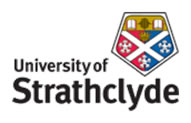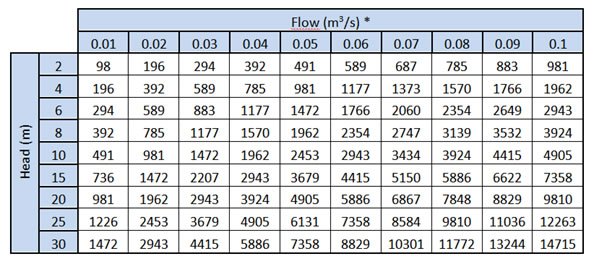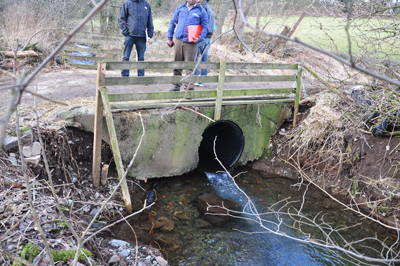

- General Considerations
- Specific Considerations

Hydro – Assessing Potential within the Rural Area
The particular conditions found in every case will make each system different. This makes it difficult to give a fixed proposal; where the design must take into account the exact location and arrangement to be used for installing the water intake, penstock and the powerhouse. In order to give a guideline to make an assessment on the suitability of installing a small scale hydro system, some concepts are shown:
- Existence and accessibility of a water source.
- Existence of a natural difference in height between the water source and where the powerhouse may be installed.
- The water source and the head will produce the sufficient energy to meet user requirements.
- Suitability to build a water intake structure. In the case that the water carries sediments, it may also be needed to install a filter or sedimentation tank. Locations with high speeds may not be suitable; therefore a structure for slowing down the speed may also be required.
- Suitability to install the penstock and powerhouse in safe areas.
- Accessibility for the installation of access paths and cable connections between the hydro system and the user.
- Installation of all the components of the systems to be located in safe and stable areas.
- That the laws and regulations allow the installation of this kind of system in the area.
- That there are no social conflicts regarding the area.
- The possible environmental impacts generated can be mitigated and managed.
Calculating the energyBy multiplying the flow by the water density (flow mass rate), the head and gravitational acceleration, the total amount of potential energy available will be calculated at the beginning of the pipe. The energy that will reach the turbine will be reduced by the friction inside the penstock and the total energy produced will be again reduced by the efficiency of the turbine, nozzle, generator and distribution.
While the friction losses inside the penstock will depend on the material, length and diameter of the tube, the efficiencies of the components will vary from system to system, leaving the values of efficiency to the final designs. For estimation purposes, at small scales, the concept of overall efficiency (no/a) - or the “water to wire” efficiency - can be used by assuming only one value of reference as the efficiency including all the losses.
Assuming the losses are included in the overall or water to wire efficiency, the total power that can be produced by a hydro power system can be calculated by the following equation:
Where,P: Power in Watts
no/a: overall efficiency
r: Density of water = 1000 kg/m3
g: Acceleration of gravity = 9.81 m/s2
Q: Water flow rate in m3/s
H: Head in metresThe values for the water to wire efficiency are usually considered in a range between 50 and 70 % (Natural Resources Canada). Values vary from author to author, some of them indicating that the smaller the system the lower the efficiency. In order to be conservative in the estimations, the following table shows a summary of the power in watts that can be produced with different flows and head at a small scale; considering an efficiency of 50 %.
Table 1. Hydro Power generation with different flows and heads.
A system with a flow of 0.05 m3/s with a head of 10 m, will produce approximately 2453 W.
*: When referring to small scale water sources, is common to find the flow readings in litres per second (l/s), in which case 1 l/s = 0.001 m3/s
Measuring Head and Flow
For headAlthough the head is a variable, as it is different from system to system, the value will remain constant once the system is defined. The head will be measured by topographic surveying with equipments such as a theodolite, total station or dumpy level. For preliminary estimation purposes, an ordnance survey map will also be useful by reading the contour lines at the beginning and end of the proposed penstock. The use of a GPS receiver will not be useful as they usually have a large margin of error when measuring vertical distances, and the use of a barometric altimeter will give an approximation when considering high heads.
For flowFigure 1. Small Stream
The flow will be a value that will commonly vary throughout the year depending on the weather. The variability of the flow will be critical as it is directly related to the power generation. The design of the hydro system will need to consider a flow value which is consistent throughout most of the year. It will also have to consider a minimum flow that has to be left in the stream in order to maintain its ecology.
The measurement of the flow can be done by several methods, the most common ones are:
- Weir Method
By building a calibrated weir, the flow can be obtained by measuring the water depth as it passes.
- Container method
By diverting the total flow into a bucket or container and measuring the time it takes to fill it. The volume of the container divided by the time will give the flow.
- Manning formula
By measuring the cross section of a regular channel and knowing its slope, the manning coefficient of the material and the depth of the water, the flow may be calculated.
- Low Flows 2000 software
This software will calculate the flow on a point by you giving the coordinates of the catchment area polygon. The software has the hydrological information of Scotland for it to calculate the flow in relation to the different parameters that will influence the flow.For having a consistent value of flow to be used for the design of the hydro system, it will be necessary to obtain flow values throughout the year and to know if the design flow can be met. The more days in a year that the design flow is met or exceeded, the more constant the supply; hence a higher capacity factor is obtained. The capacity factor is the total power produced in a year divided by the power that would be produced by generating all the year at its design capacity.
The statistical analysis will also be useful for determining the Q95 value, which is the minimum value required by SEPA that has to be left in the river or stream.
For the statistical analysis, the measurement of the flow needs to be done over a long period of time. Because the possible existing locations in many cases will not have historical data of the flows, it won’t be possible to make a solid statistical analysis. Therefore, Low Flows 2000 software is recommended as it gives a complete analysis for the flow. This is also the method recommended by SEPA.
Storage
One of the main advantages of hydro power is the capability to store water; which will work as a sort of energy storage. By storing water, the generated power can be regulated to adapt to variations in energy demand or to store water for the driest periods.
Considering the required flow for power generation and the existing source, the design of a dam or reservoir will need to follow hydrologic criteria, as well as the specific design for each case in order to maintain the head and flow, as well as the engineering of the structure.
The construction of a dam or reservoir for hydro power generation will also need special considerations regarding to the location, since they will usually cover large areas and additional regulations will be applied.
Turbine types
There are several types of turbines for adapting to different conditions. The two main types are impulse and reaction turbines and there selection will depend primarily on the head and flow. Some of the most common turbines types are shown in the following table (table 2).
Table 2. Hydraulic turbines types
Turbine name
Recommended for heads
Impulse
Pelton
> 100 m
Turgo
> 20 m
Cross flow
5 m – 60 m
Reaction
Francis
20 m – 60 m
Kaplan
< 16 m
Propeller
< 16 m
Source: Natural resources Canada, 2004
The turbine will move the electric generator, which may be either an induction or synchronous. For small scale hydro generation, the most commonly used is the induction generator. In any case, the generator will need a control unit that will maintain the generator at a constant speed in order to keep the supply at a steady frequency.
Environmental
Hydro power is an energy source that is beneficial to the environment as it doesn’t consume finite resources, and is therefore a renewable source that has a reduced impact on the environment. For all the benefits of hydro power, as with any activity, it will produce impacts that have to be considered when planning.
The impacts that may be produced, as well as the mitigation or management of these impacts, will be related to each particular case. A list of some issues that are commonly related to the environmental impact of small scale hydro power systems is:
- The existence of animals or plants that depend on the stream.
- The existence of fish that may need to move in the area where the hydro system is planned to be installed.
- The stability of the ground where the components are planned to be installed.
- The impact that might be generated if the intake area is produced by a reservoir.
- The outtake of water from the stream or river.
- Erosion and sedimentation in the river basin.
- In the case a dam is needed to be built, Decomposition of organic material in flooded areas will produce methane.
Costs
The cost that will be involved in the installation of a small scale hydro generation plant will depend on each particular case. It is possible to find modular generation systems at relatively low costs, but they will not include different additional variable costs such as the structures or penstock; necessary when planning and installing a mini hydro system. For estimation purposes, for small scale hydro systems, an overall cost in the range of £ 4,000 and £ 4,500 per installed kW may be used.
References
- British Hydropower association (2005), “A Guide to UK Mini-Hydro Developments”
- European small hydropower association (2004), “Guide on How to Develop a Small Hydropower Plant”
- Natural Resources Canada (2004), “Micro-Hydropower Systems: A Buyer’s Guide”
- Practical Action, Micro-hydro power, “Technical Brief”
| MSc: Renewable Energy Systems and the Environment | © University of Strathclyde 2010 |
